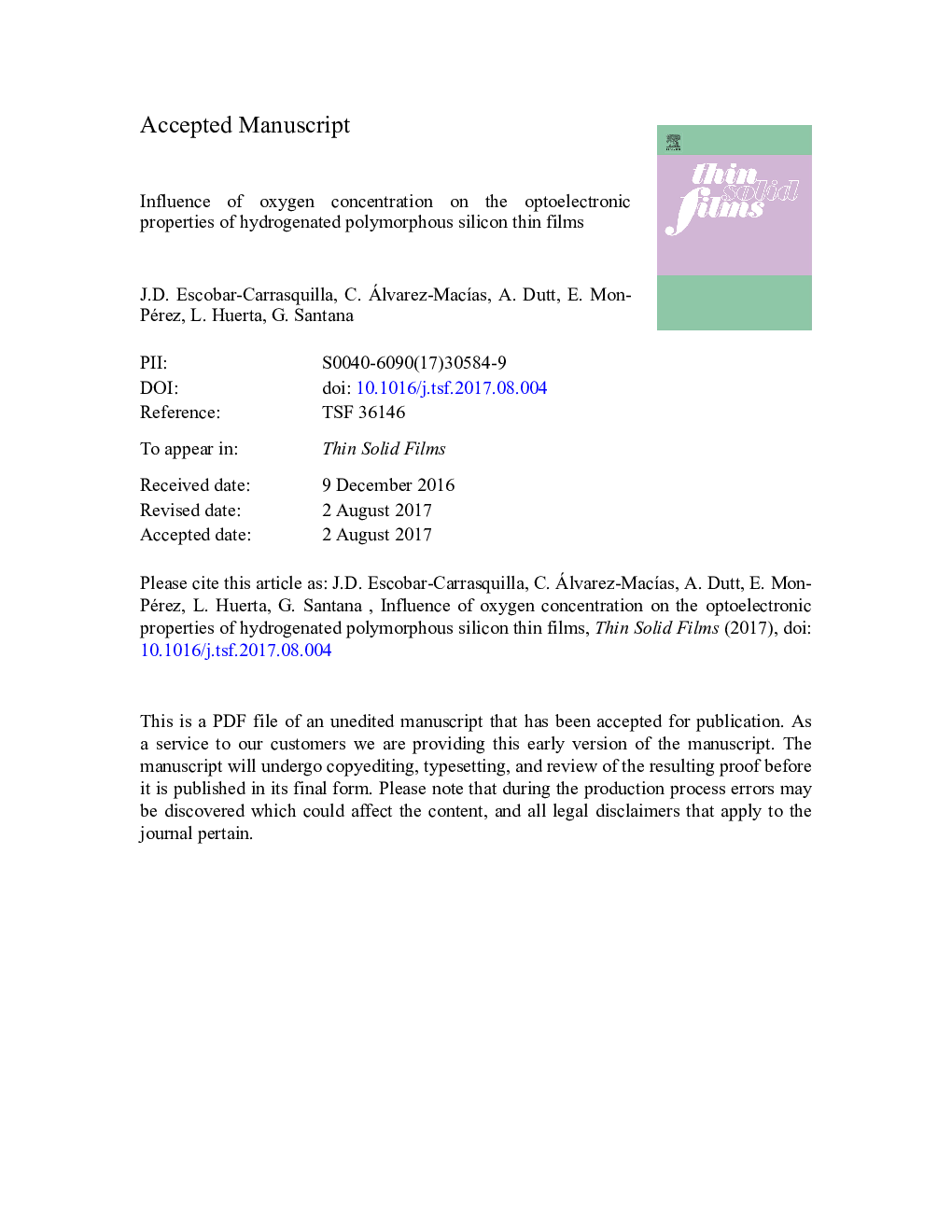| Article ID | Journal | Published Year | Pages | File Type |
|---|---|---|---|---|
| 5465895 | Thin Solid Films | 2017 | 27 Pages |
Abstract
Hydrogenated polymorphous silicon (pm-Si:H) is a suitable candidate for application in silicon-based thin film solar cells because it exhibits improved electronic transport properties and stability with respect to conventional hydrogenated amorphous silicon (a-Si:H). The use of chlorinated precursors to grow pm-Si:H thin films in a plasma enhanced chemical vapor deposition systems increases photoconductivity and photo-stability, which is one of the most desired aspects for modern solar cell applications. However, the effects of chlorine and hydrogen chemistry should be more extensively studied because it may lead to the generation of a secondary SiOx phase, after exposure to the ambiance and/or during the growth processes. In the present work, X-Ray photoelectron spectroscopy results showed the depth profile of oxygen in the polymorphous silicon thin film. Finally, we have analyzed the effect of different concentrations and profile of oxygen on the electronic transport properties by means of dark and photoconductivity analysis. Sample with high crystalline fraction and oxygen concentration showed an increase in photo-stability and conductivity due to the passivation of free terminal bonds with oxygen. Understanding chemical and structural properties of pm-Si: H thin films based on chlorine, with additional oxygen incorporation to the films, is a key towards optimizing their electrical and optical properties for the practical implementation of solar cells.
Keywords
Related Topics
Physical Sciences and Engineering
Materials Science
Nanotechnology
Authors
J.D. Escobar-Carrasquilla, C. Álvarez-MacÃas, A. Dutt, E. Mon-Pérez, L. Huerta, G. Santana,
